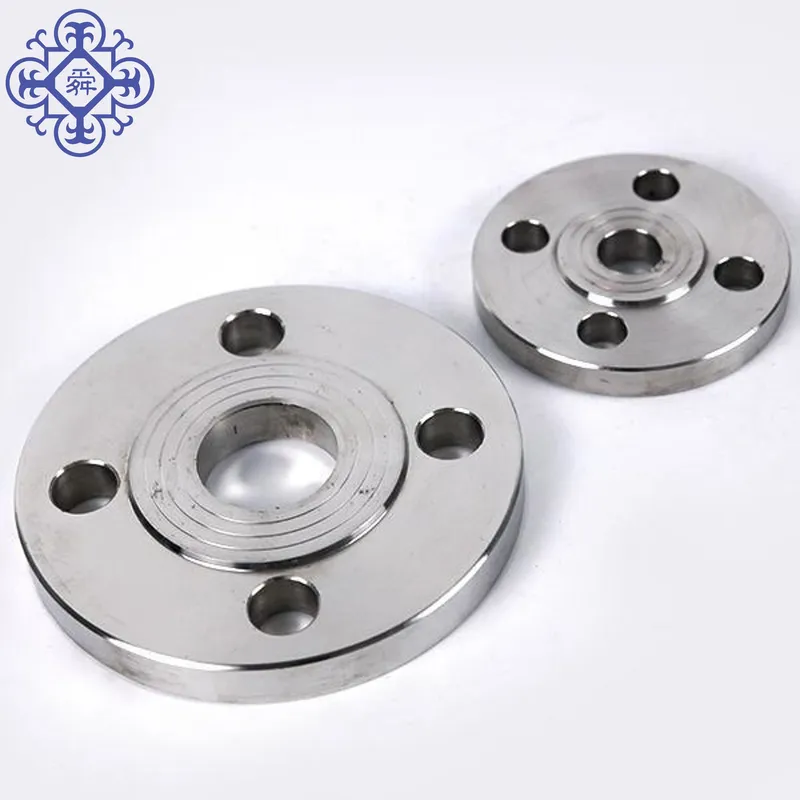Flanges: A Crucial Link in Piping Systems
In the intricate world of piping systems, the significance of flanges cannot be overstated. Serving as a pivotal connection method, flanges join pipes, valves, pumps, and equipment, not only ensuring seamless functionality but also enabling easy access for maintenance and repairs. Two primary methods of creating these connections stand out: welding and screwing. The magic happens when two flanges are securely boltedtogether with a carefully placed gasket, forming a robust joint while ensuring an airtight seal.

Diving into Flange Types and Their Applications
Within industries as diverse as Petro and chemicals, flanges take on various forms, each tailored to specific applications and requirements. Let’s explore some of the most notable flange types that have revolutionized industrial connectivity:
- Welding Neck Flange: This flange variety, known for its exceptional strength and durability, is often chosen for high-pressure applications. The neck, elongated and welded to the pipe, reduces stress concentration and enhances fluid flow.
- Slip-On Flange: Perfect for situations where quick assembly is essential, the slip-on flange slides onto the pipe before being welded in place. Its ease of installation makes it a popular choice in less demanding scenarios.
- Socket Weld Flange: When tackling moderate pressures and temperatures, the socket weld flange shines. Its recessed socket accommodates the pipe’s end, resulting in a smooth and clean connection.
- Threaded Flange: For applications where welding isn’t feasible, threaded flanges step in. By engaging with the pipe’s threads, they offer a reliable solution for low-pressure connections.
- Blind Flange: When you need to seal off the end of a piping system, the blind flange comes into play. Its solid plate with no center hole prevents flow, making it indispensable for maintenance and inspections.
- Lap Joint Flange: While not featuring a raised flange face like its counterparts, the lap joint flange offers flexibility by allowing easy alignment of bolt holes. It’s an ideal choice for systems requiring regular dismantling.
Unveiling the Material Diversity of Flanges
The material selection for flanges is a delicate dance that involves compatibility with the pipe and the operating conditions. Common materials like stainless steel, cast iron, aluminum, and forged carbon steel each bring their unique properties to the table. But that’s not the end of the story. Flanges can also incorporate different internal materials, creating what’s known as “lined flanges.” This innovative approach enhances compatibility with varying mediums and broadens the scope of applications.
Navigating Standards: ASME and ASTM
In the world of flanges, adherence to standards is paramount. The American Society of Mechanical Engineers (ASME) and the American Society for Testing and Materials (ASTM) set the benchmarks for dimensions and material qualities, respectively.
- ASME B16.5: This standard meticulously defines the dimensions of flanges, ensuring uniformity across the industry. It’s the compass guiding engineers in creating flange connections that fit like a glove.
- ASTM Materials Standards: ASTM steps in to define the material qualities required for flange production. The choice of material is no longer a shot in the dark, but a well-informed decision backed by rigorous standards.
A Visual Insight: Welding Neck Flange in Focus
Let’s take a closer look at a specific flange type: the Welding Neck Flange. Imagine a Welding Neck flange with an NPS (Nominal Pipe Size) of 6, belonging to Class 150, and adhering to Schedule 40 of ASME B16.5. This flange exemplifies the meticulous attention to detail that ASME standards bring to the table. Here’s a mermaid diagram that illustrates its structure:
graph TD
A[Flange Face]
B[Hub]
C[Pipe Weld]
D[Flange Neck]
E[Bolt Holes]
A --> B
B --> C
A --> D
B --> E
The Complexity of Bolted Flange Connections
Bolted flange connections are a symphony of components, each playing a crucial role in maintaining joint integrity. Flange design, bolt selection, gasket choice, process conditions, temperature, pressure, and the nature of the medium – all contribute to the complexity of these connections. However, the harmony of the ensemble hinges on one critical factor: accurate joint construction.
The Power of Clamping Force
Enter the mechanics on the stage of assembly. As the flanges and bolts come together, they create clamping force – the heartbeat of joint integrity. Proper installation by skilled mechanics ensures this force is distributed uniformly, sealing the connection with perfection. A leak-free joint stands as a testament to the meticulous craftmanship at play.
The Gasket’s Role: Beyond the Obvious
Gaskets, often perceived as the prime suspect in leaky flange joints, reveal a deeper truth upon closer inspection. Beyond coordinating components perfectly, the success or failure of a flange connection is intrinsically tied to how gaskets are installed and assembled. It’s a nuanced dance of precision that ensures the joint operates without a hitch.
A World of Possibilities: Beyond the Basics
While the flange types mentioned earlier cover a wide spectrum of applications, there are even more specialized varieties that cater to unique scenarios:
- Orifice Flange: Optimized for measuring flow rates, this flange features precisely machined holes to accommodate measuring devices.
- Long Weld Neck Flange: Known for its elongated neck, this flange minimizes stress at the connection point and is a favorite in high-pressure systems.
- Expander Flange: When transitions between pipe sizes are necessary, the expander flange eases the process, ensuring a smooth flow path.
- Nipo Flange: Combining the features of a weld neck and a slip-on flange, the Nipo flange offers versatility in installation and maintenance.
- Reducing Flange: Addressing the need for diameter transitions, the reducing flange connects pipes of different sizes seamlessly.
- Pad Flange: For attaching devices like pressure instruments, the pad flange provides a dedicated space without compromising the integrity of the joint.
Flange Face Matters: The Art of Sealing
Gasket sealing is a critical aspect affected by the type of flange and its face. While standards are abundant for flange connections, their welded counterparts often lack such guidelines. This is where engineering expertise comes into play, making the choice between flange connections and welded ones a calculated decision.
Striking the Balance: Efficiency vs. Practicality
Newer factories are steering away from extensive flange usage, considering factors like cost and space efficiency. The allure of a single weld connecting two pipes is undeniable. However, flange connections, despite their potential for leakage and space-consuming insulation, offer undeniable advantages. Streamlined manufacturing and reduced on-site work make them an attractive option, each approach offering its own set of pros and cons.
In Conclusion
The world of flange connections is a labyrinth of choices, each leading to its own set of outcomes. The journey from material selection to joint construction is a meticulous process that demands expert knowledge and precision. Through adherence to standards, understanding the nuances of gasket installation, and harnessing the power of clamping force, leak-free flange connections become a reality. In this intricate dance of engineering, every approach
